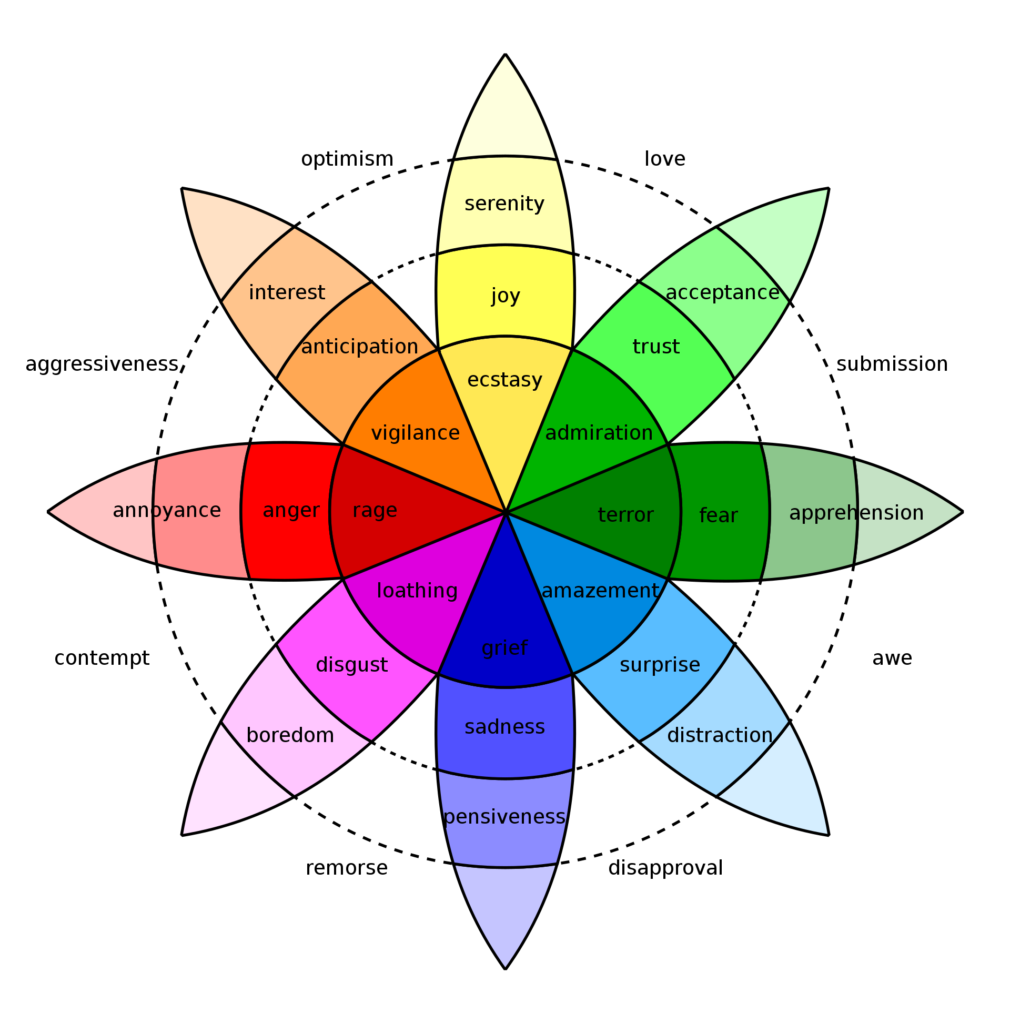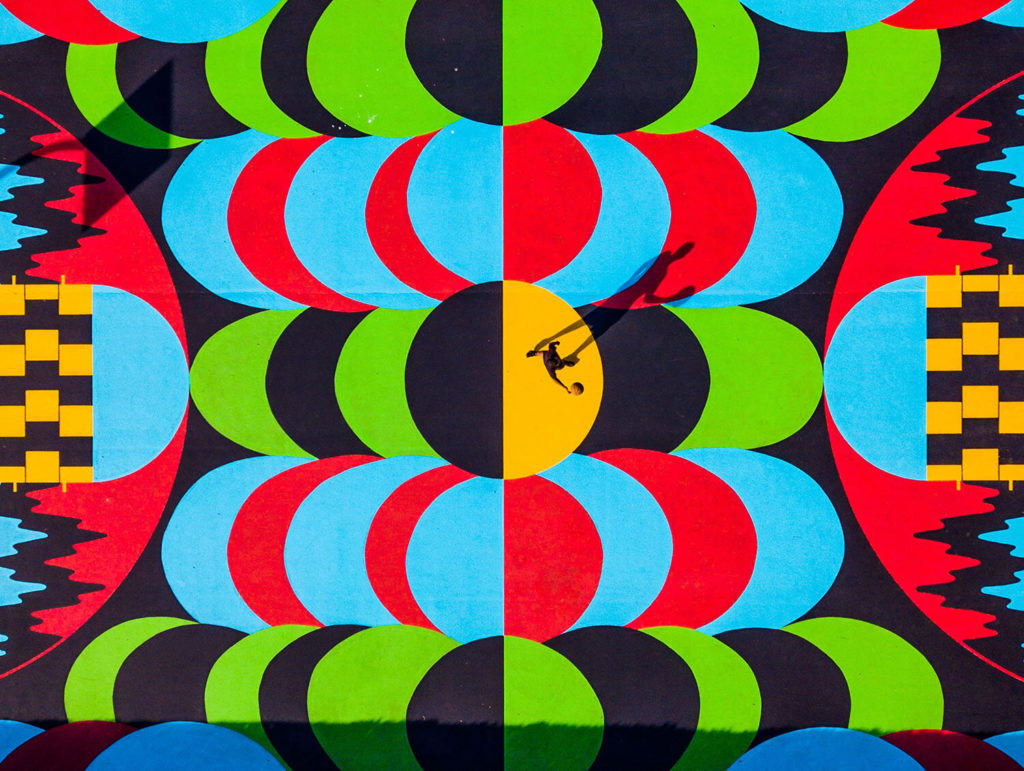- Where does joy come from?
- How do things make us feel joy?
- How can we create joyful design experiences?
- How can joyful design change human behavior and well being?
What is joy?
Joy is much more than feeling happy – it is the intense feeling of great happiness and feeling good in the moment. [1] Joy is that emotion which makes us laugh and/or jump in the air.
The “wheel of emotions” developed by Robert Plutchik, suggests eight primary emotions grouped on a positive or negative basis – one of them is joy.

joy versus sadness; anger versus fear, trust versus disgust, surprise versus anticipation
Considering his theory, basic emotions can be paired/modified to create complex emotions. The complex emotions could arise from cultural conditions or associations combined with the basic emotions – similar to the way primary colors can be combined, primary emotions could blend to form the full spectrum of human emotional experience. [2]
Joy and Design
Influence on human behavior and well-being
Ingrid Fetell Lee dedicates her work to the studies of joy in our life – Where does joy come from? What brings joy? She wrote the book “Joyful: The Surprising Power of Ordinary Things to Create Extraordinary Happiness” [3] and gave a TED talk on the subject, titled “Where joy hides and how to find it.” [4] Through her studies she found out that there is a relationship between the physical world and the feeling of joy and that there are universal matters that spark joy in almost everyone – such as rainbows, fireworks and bubbles. Those elements remind us of shared humanity in a common experience of our physical world.
Ingrid Fetell Lee particularly analyzed the “aesthetics of joy” and came to the conclusion that those are especially round things, pops of bright color, symmetrical shapes/arrangements, multiplicity, a sense of abundance and a feeling of lightness.
Case Study – Project Backboard
Project Backboard was founded in 2014 by Dan Peterson. Dan’s mission: using public basketball courts as a canvas for creative expression to strengthen communities and inspire multi-generational play. To Dan, basketball is much more than only sport – it represents joy and community. In the last years Project Backboard renovated over two dozen basketball courts from Memphis to Puerto Rico. [5]
“I am trying to explore how color can reengineer the space to make it feel more inviting.” – Dan Peterson

“I see art as a real utility that changes the way people engage with space. I feel they feel safer. When walking into our space, I believe people feel a physical vibration of the color. You feel the color in your body.” – Dan Peterson

Project Backboard is only one of many examples how our environment and society can benefit by sparking joy through art and design.
Sources
[1] Oxford Dictionaries. Joy. Url: https://www.lexico.com/definition/joy
(last retrieved November 08, 2020)
[2] Lupton, Ellen: Design is Storytelling. (p. 61) New York: Cooper Hewitt 2017
[3] Fetell, Lee: Joyful: The Surprising Power of Ordinary Things to Create Extraordinary Happiness. Little, Brown Spark 2018
[4] TED. Fetell Lee, Ingrid: Where joy hides and where to find it. URL: https://www.ted.com/talks/ingrid_fetell_lee_where_joy_hides_and_how_to_find_it (last retrieved November 08, 2020)
[5] Project Backboard. URL: https://projectbackboard.org
(last retrieved November 08, 2020)